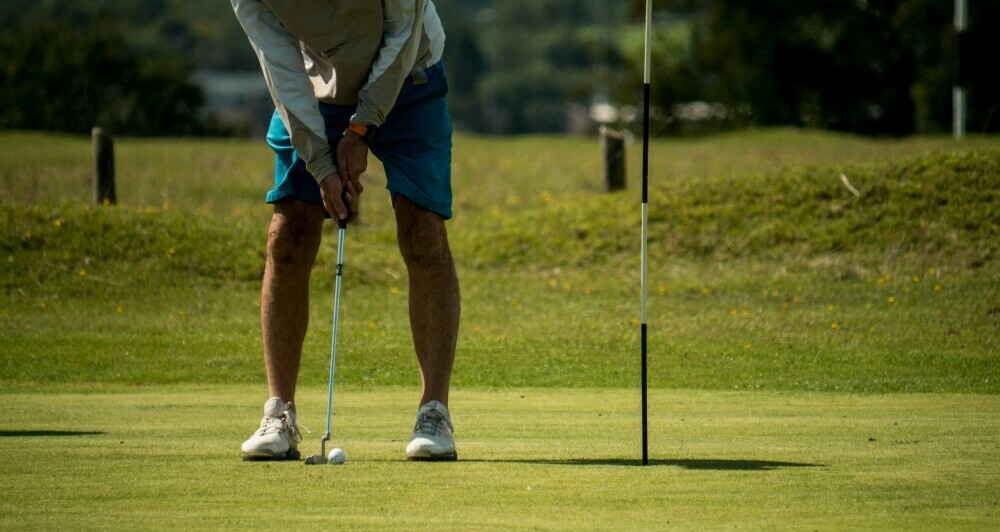If you want to see real improvement in your game, it all begins with mastering the fundamentals of putting. Trust me, I’ve seen countless players make strides simply by going back to the basics. First, you need to understand why putting is absolutely crucial in golf. It may seem less dramatic than a powerful drive, but it’s where games are won and lost.
I’m here to help you analyze your current putting technique. The first checkpoint is to scrutinize your form with a video or find a coach who can provide feedback. It’s like looking at a mirror that doesn’t lie, reflecting every aspect of your technique, from your grip to the finish of your stroke.

You’re going to discover the importance of the grip, stance, and posture. They’re the building blocks of a good putt. A grip that’s just right, not too tight or too loose, can make all the difference. Paired with a stable stance and proper posture, you’re setting yourself up for success on the green.
Another key element is your pre-putt routine. It’s more than just a few practice swings; it’s about creating a ritual that helps you focus and perform consistently. This includes everything from reading the green to visualizing the ball’s path.
Lastly, don’t worry too much about putting force initially. Putting is a blend of putting force and precision, but focusing on precision during practice allows you to hone the sensitivity of your touch. We’re laying the groundwork for finesse, which will serve as the bridge to more advanced putting strategies.
Finessing Your Technique: Advanced Strategies to Refine Your Putt
You’ve got the fundamentals down, and now you’re ready to take your putting to the next level. Finessing your technique isn’t about making sweeping changes, but rather refining what you already do well.
Reading the green is both art and science. When it comes to angles, slopes, and the speed of the grass, being savvy as well as intuitive can change the game. You can always practice by analyzing different greens and predicting the path before putting.

Now, accuracy is king in putting. There are simple techniques, such as the ‘gate drill,’ to tighten your aim. Place two clubs on the ground forming a gate just wider than your putter head and practice rolling putts through the gate. It’s a great feedback tool for maintaining a straight stroke.
The club in your hands can be as important as the swing you make. Weighing your options for selecting a putter might just give you that edge. A putter fitting, similar to a club fitting, can ensure that the length, weight, balance, comfort, and face angle are all suited to your style.
Don’t overlook the mental side of putting. Whether it’s a tap-in for par or a tricky downhill for birdie, maintaining your cool is essential. A big putt can be intimidating, but a solid mental game will see you through.
Finally, no matter the putt, adaptability is vital. Different conditions and courses will present unique challenges, so learning to adjust on the fly is a must. This might mean changing your grip slightly on faster greens or adjusting your stroke length on uphill putts.
Practice Makes Perfect: Drills and Exercises to Enhance Your Putting Skills
By now, you’re aware that honing your putting skills is an ongoing process. I’m going to lay out a selection of drills and exercises that can help take your game to the next level. Choose something that resonates with you and fits into your practice sessions comfortably.
Set smart, realistic goals to begin with. You want to shoot for incremental progress. Let’s say today you’re working on nailing putts from six feet away. As you get comfortable, you’ll push that boundary out to seven feet, then eight, and so on. Make it a game—challenge yourself to make a certain number of consecutive putts before moving on.
Let’s talk about some specific drills. Ever heard of the clock exercise? It’s a classic and for good reason. You’re going to place balls in a circle around the hole, like numbers on a clock, and putt each one in succession. Then there’s the ladder drill, which will have you systematically increase putt distance after each success. And don’t forget the gate drill—set up a ‘gate’ of tees to putt through, refining your control and stroke precision.

Embrace the power of tech where you can. A putting mat is fantastic for honing those straight, consistent strokes. If you’re curious about practice green speeds, a stimpmeter can give you that insider knowledge, making you better prepared for the variety of greens you’ll encounter.
And here’s something I really hope that you’ll take to heart. Keep a practice log. Jot down your successes and areas for improvement provides a clear view of your progress. It’ll show you just how far you’ve come and where you’re headed.
Finally, ensure you vary your practice routine. You’re not a robot and doing the same drill endlessly can be more sleep-inducing than skill-enhancing. Mixing it up keeps the brain engaged and helps build adaptable, robust muscle memory that sticks.
Your first attempt doesn’t need to be your last, nor does it need to be perfect. But with regular, deliberate practice, you’ll see those putting scores drop. Remember, in golf as in life, it’s the small strokes that lead to big victories. Happy Golfing!
**Here’s a little transparency. Our website contains affiliate links. This means if you click and make a purchase, we may receive a small commission. Don’t worry, there’s no extra cost to you. It’s a simple way you can support our mission to bring you quality content.**
